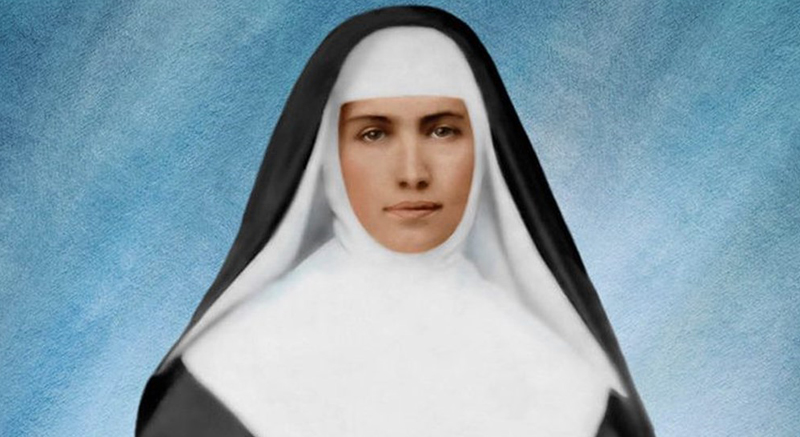(1838-1918)
Today’s saint will be familiar to members of St. Mary of Mount Carmel / Blessed Sacrament Parish as she can trace part of her origin story to our city and the neighboring parish of St. Joseph / St. Patrick. She also founded one of our hospitals. Her story begins, however, in Germany.
Marianne was born to Peter and Barbara Koob (later anglicized to Cope) of Hessen-Darmstadt, Germany. She was named after her mother. Two years later the Cope family immigrated to the United States and settled in Utica. Young Barbara was educated in St. Joseph’s parish school. Later, when her father became an invalid, she left school and worked in a textile factory until August 1862.
Her father had died, and her younger siblings could fend for themselves. She was free to pursue a religious calling with the Sisters of the Third Order of St. Francis as Sister Marianne in Syracuse. After profession in November of the next year, she began teaching at Assumption parish school.
Marianne held the post of superior in several places and was twice the novice mistress of her congregation. A natural leader, three different times she was superior of St. Joseph’s Hospital, among the first general hospitals in the country, in Syracuse, where she learned much that would be useful during her years in Hawaii.
As St. Joseph’s hospital’s administrator, she became involved with the move of Geneva Medical College of Hobart College from Geneva to Syracuse, where it became the College of Medicine at Syracuse University. She also founded St. Elizabeth Hospital in Utica.
Elected provincial in 1877, Mother Marianne was unanimously re-elected in 1881. Two years later the Hawaiian government was searching for someone to run the Kakaako Receiving Station for people suspected of having leprosy. More than 50 religious communities in the United States and Canada were asked.
When the request was put to the Syracuse sisters, 35 of them volunteered immediately. On Oct. 22, 1883, Mother Marianne and six other sisters left for Hawaii where they took charge of the Kakaako Receiving Station outside Honolulu; on the island of Maui, they also opened a hospital and a school for girls.
In 1888, Mother Marianne and two sisters went to Molokai to open a home for “unprotected women and girls.” The Hawaiian government was quite hesitant to send women for this difficult assignment; they need not have worried about Mother Marianne. On Molokai she took charge of the home that St. Damien de Veuster had established for men and boys.
Mother Marianne changed life on Molokai by introducing cleanliness, pride, and fun to the colony. Bright scarves and pretty dresses for the women were part of her approach.
Awarded the Royal Order of Kapiolani by the Hawaiian government and celebrated in a poem by Robert Louis Stevenson, Mother Marianne continued her work faithfully. Her sisters have attracted vocations among the Hawaiian people and still work on Molokai.
Mother Marianne died on Aug. 9, 1918, and was beatified in 2005 and canonized seven years later.
Adapted by A. J. Valentini from: St. Marianne Cope | Franciscan Media. (n.d.). Franciscan Media. Retrieved Jan. 16, 2021, from https://www.franciscanmedia.org/saint-of-the-day/saint-marianne-cope and St. Marianne Cope Biography. (n.d.). St. Marianne Cope Shrine & Museum. Retrieved Jan. 16, 2021, from https://www.saintmarianne.org/her-story.html
